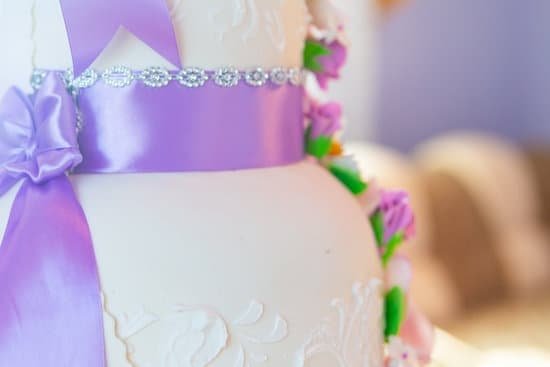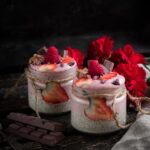Frangipani flowers have long been admired for their delicate beauty and enchanting fragrance. In the world of cake decorating, these captivating blooms take center stage, adding an elegant touch to any confectionary masterpiece.
Whether you’re a professional baker or simply love getting creative in the kitchen, incorporating frangipani flowers into your cake designs is sure to elevate their visual appeal. In this article, we’ll explore the artistry of cake decorating with frangipani flowers, from understanding their origins and symbolism to discovering different types and techniques for incorporating them into your creations.
When it comes to cake decorating, every detail matters. Frangipani flowers have gained immense popularity in recent years due to their stunning appearance and cultural significance. Originating from tropical regions, these vibrant flowers have long been celebrated for their association with love, beauty, and fertility. As cake decorators began seeking unique and eye-catching elements for their designs, frangipani flowers quickly became a favorite choice.
Understanding the origins and symbolic meanings behind frangipani flowers adds depth and resonance to your cake creations. By exploring different varieties of frangipani flowers commonly used in cake decorating – from their distinctive colors to shapes and sizes – you can further unleash your artistic potential. The delicate grace of these blossoms can be brought to life through various techniques such as piping, fondant molding, or painting.
In the following sections of this article, we will delve deeper into the world of frangipani flower cake decorating. From practical tips on preparing frangipani flowers for cake decoration to design ideas that will inspire you to push your creative boundaries, we will help you master the artistry behind these captivating blooms. So get ready to embark on a journey where creativity meets sweet indulgence as we explore the endless possibilities offered by frangipani flower cake decorating.
Understanding the Frangipani Flower
Frangipani flowers have a rich history and cultural significance, especially in tropical regions. These stunning blossoms originate from the Caribbean and Central America but have since spread to various parts of the world. In many cultures, frangipani flowers hold deep symbolic meanings, making them a popular choice for cake decorators looking to add a touch of elegance and meaning to their creations.
The origins of the frangipani flower can be traced back to ancient times. It is believed that these flowers were first cultivated in Mexico around 2,000 years ago. From there, they made their way to South America and the Caribbean through trade routes. Over time, frangipani flowers became deeply ingrained in the local cultures of these regions.
In many tropical countries, frangipanis are associated with beauty, love, and fertility. They are often used in traditional ceremonies such as weddings or birth celebrations as symbols of good luck and blessings. The fragrance and delicate appearance of frangipani flowers make them particularly captivating. The flower’s five petals are said to represent purity, strength, love, devotion, and enlightenment.
Cake decorators who choose to incorporate frangipani flowers into their designs can tap into this rich symbolism. By using these flowers as decorations on special occasions like weddings or anniversaries, they can add an extra layer of meaning to the cake itself. The beauty of this art form lies not only in its visual appeal but also in how it can bring cherished cultural beliefs into modern celebrations.
Whether you’re creating a cake for a tropical-themed party or simply want to add a touch of exotic beauty to your design repertoire, understanding the origins and symbolism behind frangipani flowers is key. By appreciating their cultural significance and capturing them in sugar form on your cakes, you can infuse each creation with a sense of wonder and meaning.
Types of Frangipani Flowers for Cake Decorating
Frangipani flowers are a popular choice for cake decorating due to their delicate beauty and vibrant colors. There are several types of frangipani flowers that can be used to adorn cakes, each with its own unique characteristics. These flowers add a touch of elegance and tropical flair to any cake design, making them a favorite among both professional cake decorators and enthusiasts.
One common type of frangipani flower used in cake decorating is the Plumeria rubra, also known as the red frangipani. As the name suggests, this flower has striking red petals with a yellow center. Its distinct color combination adds a pop of vibrancy to any cake design. Additionally, the Plumeria rubra is known for its sweet fragrance, which further enhances the sensory experience of enjoying a beautifully decorated cake.
Another variety of frangipani flower commonly used in cake decorating is the Plumeria obtusa, or white frangipani. This flower features pure white petals with bright yellow centers, creating an elegant and pristine look on cakes. The simplicity and purity associated with white frangipanis make them a versatile choice for various occasions and cake themes.
For those looking for a more exotic touch, there is also the Plumeria pudica or Bridal veil frangipani. This particular variety has beautiful white flowers with long and narrow petals resembling delicate bridal veils. The ethereal appearance of Bridal veil frangipanis adds an air of romance and whimsy to cake designs.
To showcase these different types of frangipani flowers, cake decorators often incorporate them into visually stunning designs. For example, they may create cascades of red frangipanis flowing down the tiers of wedding cakes or arrange clusters of white frangipanis on top of birthday cakes for a clean and elegant look.
| Type of Frangipani Flower | Distinctive Characteristics |
|---|---|
| Plumeria rubra (Red frangipani) | Striking red petals with a yellow center; sweet fragrance |
| Plumeria obtusa (White frangipani) | Pure white petals with bright yellow centers; versatile and elegant |
| Plumeria pudica (Bridal veil frangipani) | Beautiful white flowers with long, narrow petals resembling bridal veils; adds romance and whimsy |
Preparing Frangipani Flowers for Cake Decoration
Gathering the Necessary Materials
Before you can begin creating frangipani flower decorations for your cakes, it is important to gather all the necessary materials. This includes fondant or gum paste in various colors, a rolling pin, frangipani flower cutters in different sizes, a foam pad, a ball tool, and a veining tool.
Step-by-Step Instructions
- Start by kneading the fondant or gum paste to make it pliable and easy to work with.
- Roll out the fondant or gum paste on a clean surface using a rolling pin until it is about 1/8 inch thick.
- Place the frangipani flower cutter onto the rolled out fondant/gum paste and press firmly to cut out the shape of the flower.
- Gently lift the cutout flower shape and place it onto a foam pad.
- Using a ball tool, gently press into the center of the flower shape to create a depression.
- Next, use a veining tool to create realistic texture on each petal of the frangipani flower by gently pressing along the edges and veins of each petal.
- Repeat this process for as many flowers as you need for your cake design.
Drying and Storing Frangipani Flowers
Once you have prepared your frangipani flowers for cake decoration, it is important to allow them to dry before using them on your cakes. This will ensure that they hold their shape and maintain their delicate appearance.
To dry frangipani flowers:
- Carefully transfer each flower onto a drying rack or parchment paper-lined tray.
- Allow the flowers to air-dry at room temperature for at least 24 hours (or longer if needed) until they are firm and dry to touch.
- Once fully dried, store the frangipani flowers in an airtight container at room temperature until you are ready to use them. Properly stored frangipani flowers can last for several weeks.
By following these step-by-step instructions and properly drying and storing your frangipani flowers, you will be well-prepared to enhance your cake designs with the beautiful and realistic look of frangipani flower decorations.
Design Ideas and Techniques for Cake Decorating with Frangipani Flowers
When it comes to cake decorating with frangipani flowers, the possibilities are endless. These beautiful blooms can be incorporated into various design elements to create stunning cakes that are guaranteed to impress. Here are some design ideas and techniques for using frangipani flowers in cake decorating:
- Cascading Frangipani Flowers: Create a mesmerizing visual effect by arranging frangipani flowers in a cascading pattern that flows down the sides of the cake. This technique can be achieved by attaching wired frangipani blooms to the cake using edible glue or royal icing. Choose flowers in complementary colors for an eye-catching display.
- Frangipani Centerpiece: Make a bold statement with a single large frangipani flower as the centerpiece of your cake. Position the flower delicately on top of the cake, either standing upright or slightly tilted for added elegance. This technique works particularly well for smaller cakes or cupcakes.
- Frangipani Garland: Enhance your cake’s overall appearance by creating a garland of frangipani flowers to adorn its edges. Use fondant molds or piping bags fitted with petal nozzles to craft realistic-looking flowers with buttercream or fondant. You can vary the sizes and colors of the flowers to add depth and dimension.
Incorporating frangipani flowers into your cake designs is not only visually appealing but also allows you to explore different techniques and best practices in cake decorating. Whether you prefer minimalistic designs or intricate floral arrangements, these versatile blossoms will elevate your creations to new heights.
| Design Technique | Image |
|---|---|
| Cascading Frangipani Flowers |  |
| Frangipani Centerpiece |  |
| Frangipani Garland |  |
These design ideas and techniques are just a starting point for your creative exploration with frangipani flower cake decorating. Don’t be afraid to experiment, mix and match colors, and develop your unique style that showcases the beauty of these enchanting flowers. Let your imagination run wild, and have fun creating stunning cake designs that incorporate frangipani flowers.
Color Psychology and Frangipani Flower Cake Decorating
When it comes to cake decorating, color plays a crucial role in creating visually stunning and impactful designs. Understanding the psychology behind different colors can help cake decorators evoke specific emotions or moods through their creations. In the context of frangipani flower cake decorating, incorporating various colors can enhance the overall aesthetic appeal and communicate a particular theme or message.
Here are some key aspects of color psychology and how they can be applied to frangipani flower cake decorating:
- Yellow frangipani flowers: Yellow is often associated with joy, happiness, and positivity. Decorating cakes with vibrant yellow frangipani flowers can create a celebratory atmosphere and radiate warmth. Whether used as accents or as the main focus, yellow frangipanis can brighten up any cake design.
- Pink frangipani flowers: Pink symbolizes love, romance, and femininity. Incorporating soft pink frangipanis into cake decorations can add a touch of elegance and delicacy to wedding cakes or other romantic-themed desserts.
- White frangipani flowers: White represents purity, innocence, and spirituality. Using white frangipanis in cake decorating conveys a sense of tranquility and simplicity. These flowers are versatile and work well in both minimalist designs and intricate arrangements.
- Orange frangipani flowers: Orange is often associated with energy, creativity, and enthusiasm. Adding orange frangipanis to cakes can inject vibrancy and excitement into the overall design. They are especially suitable for birthday cakes or desserts meant for festive occasions.
- Complementary color combinations: Combining complementary colors on cakes can create contrast and visual interest. For example, pairing purple-framed white frangipanis with yellow fondant icing creates a striking color combination that grabs attention.
By understanding the psychological impact of different colored frangipani flowers, cake decorators can create harmonious and emotionally resonant designs that captivate the viewers.
Real-Life Examples and Inspirations
When it comes to cake decorating with frangipani flowers, there is no shortage of stunning real-life examples and inspirations to draw from. Professional cake decorators and enthusiasts alike have showcased their creative flair by incorporating these beautiful flowers into their cake designs. These real-life examples serve as a valuable source of inspiration for anyone looking to elevate their own cake decorating skills.
One popular approach to using frangipani flowers in cake design is to create a cascading effect. This involves arranging the flowers in a way that they appear to be flowing down the side of the cake, creating an elegant and dynamic look. The cascading frangipani flower technique works particularly well on tall cakes, such as tiered wedding cakes or celebratory cakes.
Another creative way to incorporate frangipani flowers into cake designs is through minimalistic arrangements. By using only a few carefully placed flowers, decorators can create a striking and modern aesthetic. This approach works well for those who prefer a more understated yet sophisticated look for their cakes.
For those seeking a more whimsical style, frangipani flowers can be paired with other elements such as butterflies or tropical foliage. This creates a playful and vibrant atmosphere, perfect for themed celebrations like summer parties or Hawaiian-inspired events.
It’s important to note that these are just a few examples of how frangipani flowers can be used in cake decorating. The possibilities are truly endless, and each design can be tailored to suit individual preferences and occasions. Whether you are aiming for elegance, simplicity, or something fun and extravagant, frangipani flowers can always add that extra touch of beauty to your creation.
Tips and Troubleshooting
Tips for Working with Delicate Frangipani Flower Decorations
When working with frangipani flowers for cake decorating, it’s important to remember that they are delicate and can easily break or lose their shape. Here are a few tips to help you handle these fragile decorations with ease:
- Use a gentle touch: Frangipani flowers are delicate, so it’s essential to handle them with care. When placing the flowers on the cake, use a light touch to prevent any damage. Consider using tweezers or a small offset spatula for added precision.
- Reinforce the petals: To add stability to your frangipani flower decorations, consider reinforcing the petals. You can do this by gently brushing the back of each petal with a thin layer of gum glue or edible adhesive. This will help prevent any drooping or wilting during the decoration process.
- Freeze your decorations: If you’re concerned about your frangipani flowers losing their shape while handling them, try freezing them for a brief period before applying them to your cake. Freezing will provide added rigidity and make it easier to position them exactly where you want.
Achieving Realistic Color Gradients on Frangipani Flowers
One of the challenges in cake decorating with frangipani flowers is achieving realistic color gradients on each petal. Here are some techniques to help you create stunning and lifelike colors:
- Layering technique: Start by applying the base color to each petal using either edible dust or airbrushing. Then, gradually add smaller amounts of darker shades towards the base or center of the petals using an airbrush or a fine brush. Blend the colors softly at each transition point for seamless gradients.
- Wet-on-wet technique: This technique involves applying multiple shades of edible paint while they’re still wet. Start by applying the lightest color to the petal, then immediately apply the next shade while it’s still wet. Blend the colors together using a clean brush or sponge, working quickly to achieve a smooth gradient.
- Dusting technique: If you prefer working with edible dusts, you can achieve beautiful color gradients on frangipani flowers by layering different shades of dust onto each petal. Use a soft brush to gently apply each color, gradually building up intensity and blending the colors as needed for a realistic effect.
Troubleshooting Tips for Frangipani Flower Cake Decorating
While cake decorating with frangipani flowers can be visually stunning, it also comes with its fair share of challenges. Here are some helpful troubleshooting tips to overcome common issues:
- Preventing drooping petals: If your frangipani flower petals start wilting or drooping before you even place them on the cake, try lightly misting them with water or edible adhesive spray. This will add moisture and help maintain their shape throughout the decorating process.
- Dealing with cracks or breakages: Frangipani flowers are delicate and can easily develop cracks or break. To fix small cracks, gently moisten your finger with water and press it against the crack to seal it together. For larger breaks, use a small amount of gum glue or edible adhesive to hold the parts together until they dry.
- Adjusting color intensity: If you find that your frangipani flower decorations are not as vibrant as desired, consider adding layers of colored edible dust or paint to intensify the colors gradually. Build up the colors slowly and allow drying time between each layer for better control over color intensity.
By following these tips and troubleshooting strategies, you’ll be better equipped to overcome challenges in cake decorating with frangipani flowers and create stunning designs that highlight their beauty.
Conclusion
In conclusion, frangipani flowers offer an exquisite and versatile option for cake decorators looking to elevate the visual appeal of their creations. Throughout this article, we have explored the origins, symbolism, and significance of frangipani flowers, as well as various types and techniques for incorporating them into cake designs.
From understanding the cultural importance of these tropical blooms to exploring the psychological impact of different color combinations, it is clear that frangipani flowers have a unique charm in the world of cake decorating.
The diverse range of design ideas and techniques showcased in this article provide ample inspiration for both professional cake decorators and enthusiasts alike. By incorporating frangipani flower decorations into their cakes, individuals can create stunning and visually captivating designs that are sure to leave a lasting impression on any occasion. With careful preparation and attention to detail, frangipani flower decorations can yield realistic and breathtaking results.
In this journey through frangipani flower cake decorating, it is important to embrace our own creativity and experiment with different styles, textures, and color palettes. The artistry of frangipani flower cake decorating allows us to express ourselves while creating edible masterpieces that are not only visually appealing but also evoke emotions in those who see them.
Whether you are a professional decorator or just starting out on your baking journey, don’t be afraid to embrace the beauty and versatility of frangipani flowers in your cake designs. Let your imagination flourish with these enchanting blooms as you create stunning works of edible art.
Frequently Asked Questions
Can you put frangipani on a cake?
Yes, frangipani can be used as a decorative element on a cake. Frangipani flowers are known for their vibrant and tropical appearance, making them an attractive choice for adding a touch of beauty to cakes. These flowers are commonly used for various celebrations or events where a visually appealing dessert is desired.
The petals of frangipani flowers can be carefully placed on top of the icing or frosting to enhance the cake’s overall aesthetic appeal. However, it is important to note that only the petals should be used, as other parts of the frangipani flower are not edible.
Are frangipani flowers edible?
While frangipani flowers are visually stunning, they are not considered edible in most culinary contexts. The petals of frangipani flowers contain toxins and alkaloids which can be harmful if ingested in large quantities.
Therefore, it is recommended to refrain from eating frangipanis or using them as an ingredient in recipes that involve consumption. However, they can still be safely used as decorations on cakes or as garnishes for non-edible items like cocktails or serving platters.
Can you put plumerias on a cake?
Plumerias, also known as frangipani flowers, can indeed be put on cakes as decorative elements. Like their counterparts mentioned earlier, plumeria flowers are visually enticing with their gorgeous colors and delicate petals. They can serve as an eye-catching addition to cakes for special occasions such as weddings or birthdays.
Similar to using frangipanis, it is important to ensure that only the petals are used when adorning a cake with plumeria flowers since other parts of the plant may contain toxins. When handled correctly and applied in moderation, plumerias can bring an elegant and tropical vibe to any cake creation.

Welcome to our cake decorating blog! My name is Destiny Flores, and I am the proud owner of a cake decorating business named Cake Karma. Our mission is to provide delicious, beautiful cakes for all occasions. We specialize in creating custom cakes that are tailored specifically to each customer’s individual needs and tastes.





